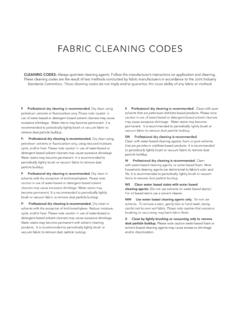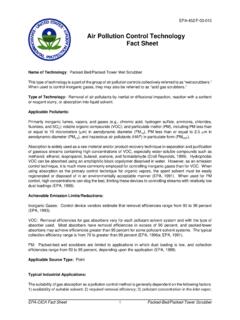Transcription of Smart Floor Cleaning Robot (CLEAR) - IEEE Standards University
1 Copyright 2015 Uman Khalid, Muhammad Faizan Baloch, Haseeb Haider, Muhammad Usman Sardar, Muhammad Faisal Khan, Abdul Basit Zia and Tahseen Amin Khan Qasuria Smart Floor Cleaning Robot (CLEAR)Uman Khalid1, Muhammad Faizan Baloch1, Haseeb Haider1, Muhammad Usman Sardar1, Muhammad Faisal Khan1,2, Abdul Basit Zia1 and Tahseen Amin Khan Qasuria1 1 Faculty of Electronic Engineering, Ghulam Ishaq Khan Institute of Engineering Sciences and Technology, Pakistan 2 Hamdard Institute of Engineering & Technology, Hamdard University , Karachi, Pakistan Abstract With the advancement of technology, robots are getting more attention of researchers to make life of mankind comfortable. This paper presents the design, development and fabrication of prototype Smart Floor Cleaning Robot (CLEAR) using IEEE Standard 1621 (IEEE Standard for User Interface Elements in Power Control of Electronic Devices employed in Office/Consumer Environments).
2 Subject Robot operates inautonomous mode as well as in manual mode along with additional features like scheduling for specific time and bagless dirt container withauto-dirt disposal mechanism. This work can be very useful in improving life style of mankind. IndexTerms Autonomous roaming, manual control, power status indications, power controls, power efficient, Cleaning Robot . I. INTRODUCTION In recent years, robotic cleaners have taken major attention in robotics research due to their effectiveness in assisting humans in Floor Cleaning applications at homes, hotels, restaurants, offices, hospitals, workshops, warehouses and universities etc. Basically, robotic cleaners are distinguished on their Cleaning expertise like Floor mopping, dry vacuum Cleaning etc. Some products are based on simple obstacle avoidance using infrared sensors while some utilize laser mapping technique.
3 Each Cleaning and operating mechanism of robotic Floor cleaners has its own advantages and disadvantages. For example, robots utilizing laser mapping are relatively faster, less time consuming and energy efficient but costly, while obstacle avoidance based robots are relatively time consuming and less energy efficient due to random Cleaning but less costly. Countries like Pakistan are way back in manufacturing robotic cleaners. Importing them from abroad increases their costs. The main objective of this work is to provide a substantial solution to the problem of manufacturing robotic cleaner utilizing local resources while keeping it low costs. In this work, Smart Floor Cleaning Robot (CLEAR) has been designed for consumer/office environments and its each component in accordance with IEEE Standard is is being operated in dual modes.
4 In one of the modes, the Robot is fully autonomous and making decisions on the basis of the outputs of infrared proximity sensors, ultrasonic sensors and tactile sensors after being processed by Arduino (mega) controller and control the actuators (2 DC encoder motors) by the H-bridge driving circuitry. In manual mode, the Robot can also be used to clean a specific area of a room by controlling it manually from laptop with a Graphical User Interface (GUI) in Visual Studio (C# programming language) via Bluetooth connectivity. This paper is arranged in eight sections. IEEE standard used in this project is discussed in Section II. A detailed literature review of robotic vacuum cleaners is presented in Section III. Section IV covers the mechanical design of robotincluding chassis design, brushing, vacuum Cleaning mechanism and auto-dirt disposal circuitry (including motor controllers, vacuum cleaner controller, battery status meters and brushing motor controller along with safety circuit for power supply to sensors, arduino controller as well as precautionary circuit) is discussed in Section User Interface (GUI) of the project and Robot operation are discussed in Section VI and VII respectively.
5 All these sections describe their relevance to the application of IEEE Standard 1621. Conclusions of the project are summarized in Section VIII. II. STANDARD APPLIED The standard being applied is IEEE Std 1621 -2004(R2009) IEEE Standard for User Interface Elements in Power Control of Electronic Devices Employed in Office/Consumer Environments for the design and fabrication of Smart Floor Cleaning Robot . IEEE Standard 1621 enabled authors to learn and implement basic power & control mechanism for subject Robot , thus making it user friendly. The mode of implementation of IEEE Standard 1621 is discussed in detail in later sections. III. LITERATURE REVIEW A robotic vacuum cleaner is an autonomous electronic device that is intelligently programed to clean a specific area through a vacuum Cleaning assembly. Some of the available products can brush around sharp edges and corners while others include a number of additional features such as wet mopping and UV sterilization rather than vacuuming.
6 Some of the available products are discussed below. A. iRobot[2] In 2002, iRobot launched its first Floor vacuum cleaner Robot named Roomba. Initially, iRobot decided to manufacture limited number of units but Roomba immediately became a huge consumer sensation. Due to its increased market demand, a series of following robots have been launched in the market: 1. Roomba Launch Date: 2002 Manufacturer: iRobot (American) Type of Use: Dry Vacuum Technology: IR, RF and auto-charging mechanism Price: $500 Copyright 2015 Uman Khalid, Muhammad Faizan Baloch, Haseeb Haider, Muhammad Usman Sardar, Muhammad Faisal Khan, Abdul Basit Zia and Tahseen Amin Khan Qasuria 2. Scooba Launch Date: 2005 Manufacturer: iRobot (American) Type of Use: Wet Washing of Floor Technology: IR with virtual wall accessories Price: $500 3. Braava Launch Date: 2006 Manufacturer: iRobot, KITECH, Sony Type of Use: Floor moping for hard surfaces/Dry clean Technology: IR with virtual wall accessories for industrial Cleaning Price: $700 B.
7 NEATO Robotics[3] With the advent of robotic vacuum cleaners, many countries had started manufacturing robotic cleaners. China also started manufacturing these robots with more reliable technology and advanced features. 1. Neato XV-11 Launch Date: 2010 Manufacturer: Neato-Robots XV series (California)/China Type of Use: Vacuum Cleaning Technology: Laser range finder technology, SLAM (Simultaneous localization and mapping) and auto-charging Price: $399 C. Dyson[4] In 2001, Dyson built a Robot vacuum known as DC06 which was never released to the market due to its high price. In 2014, Dyson launched a new product named as Dyson 360 Eye which uses a different technology for path finding as compared to products manufactured by NEATO Robotics or iRobot. 1. EYE-360[5 ] Launch Date: 2016 Manufacturer: Dyson (UK) Type of Use: Vacuum Cleaning Technology: It uses a 360 degree panoramic vision camera to monitor its environment in real time and a turbo brush for efficient Cleaning along with an auto-charging mechanism (Benchmark in history of Cleaning robots) Price: $1000 (approx.)
8 A comparison of proposed Robot CLEAR with the top selling robotic cleaners in international market on the basis of general specifications like operating time, charging time, scheduling, Floor type, battery indicators and navigation features is summarized in Table I. TABLEI. COMPARISON OF CLEAR WITH AVAILABLE PRODUCTS [6]. ROBOTS FEATURES NEATO-XV ROOMBA CLEAR Operating time (hr) 2 Charging time (hr) 3 4 2 Scheduling Yes Yes Yes Battery indicators Yes Yes Yes Full-bin indicators Yes Yes Yes Remote control Yes Yes Yes Return to base No No Yes D. Comparison with previous Patented Devices A detailed comparison of previous patented robotic vacuumcleaners with CLEAR on the basis of main featuresof control mechanism like automatic or manual mode and Cleaning expertise like dry vacuum Cleaning or mopping along with additional features like bag-less container etc. is summarized in Table II.
9 OF CLEAR WITH PATENTS. PATENTS SALIENT FEATURES CLEAR FEATURES Autonomous Floor mopping apparatus[7] US-6,741,054 This Robot is autonomous and can be remotely controlled. Autonomous motion using IR sensor mechanism and manually controlled via GUI controls. A feed roller lets out a roll toweling, take-up roller reels in the toweling, and a motor system causes it to rotate while Robot moves. Simple roller brushing and vacuuming. Autonomous Floor - Cleaning Robot [8] US-6883201 B2 Self-adjusting Cleaning head with brush assembly having counter-rotating, asymmetric brushes. Simple roller brushing. Independent, vacuum assembly so that the Cleaning capability and efficiency is optimized. Separate vacuum assembly. A removable dust cartridge. Dirt compartment with auto-disposal. A control system, in Autonomous motion Copyright 2015 Uman Khalid, Muhammad Faizan Baloch, Haseeb Haider, Muhammad Usman Sardar, Muhammad Faisal Khan, Abdul Basit Zia and Tahseen Amin Khan Qasuria communication with the motive system having feedback from sensors.
10 Using IR sensor mechanism and manually controlled via GUI controls. Autonomous surface Cleaning Robot for wet and dry Cleaning [9] US-7,389,156 The Robot chassis carries Cleaning elements to suck particles up from the Cleaning surface and apply a Cleaning fluid onto the surface to collect the Cleaning fluid up from the surface using a rotating sponge. A roller brush brooming the dirt into dirt compartment aided by a vacuum cleaner. The Robot includes controls and drive elements configured to control the Robot using sensor mechanism. Autonomous motion using IR sensor mechanism and manually controlled via GUI controls. A removable dust cartridge with separate tank for Cleaning fluid. Dirt compartment with auto-disposal. Cleaning Robot and control method thereof[10] US-2013/0231819 Contains a movement module, a sound wave sensor module, a Cleaning module (vacuum only) and a controlling module.




